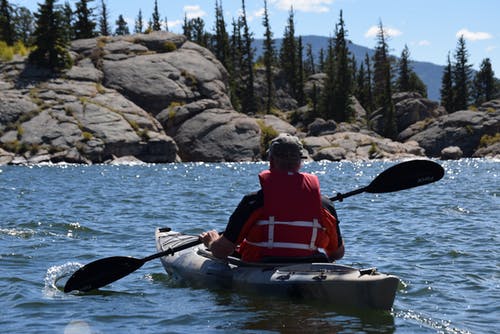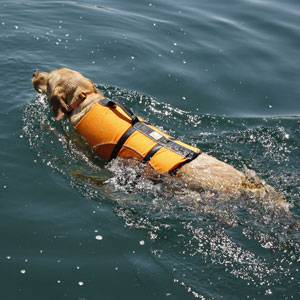Kayaking can be a rewarding and pleasurable sport to pick up. Kayaking has something for everyone, whether it is leisure, touring, or competition. It is also great for fishing or simply to head out into the calmness of a lake. If you are reading this article, then you are most likely looking for a kayaking size guide and an effective way to answer the question, “what size kayak do I need?”
However, finding a recreational kayak that best suits you can be a challenge so we’re here to answer your questions.

Table of Contents
What Size Kayak Do I Need? What to Consider
When considering a kayak, there are a few things you need to take into account before even thinking about what type of kayak you want. Factors such as length, weight, volume capacity, and cockpit size are things you need to note when searching for a kayak.
Generally, your ideal kayak length is long enough for maneuverability and easy tracking.
The kayak should be sufficiently wide to provide stability. The width of most kayaks tends to range between 20 to 30 inches. At the very least, the kayak volume and weight should be 125 pounds more than your body weight, including any gear you plan to carry with you on your kayaking trips.
You should also be able to fit inside the kayak cockpit comfortably while being able to easily get out in case the boat capsizes. So, if you’re short, look for a smaller kayak. Taller paddlers may need a longer kayak length.
Legroom
A common mistake first-time kayakers make is purchasing a kayak without considering the length of their leg. To boat successfully, you need to be comfortable, and that requires legroom. Optimally, you want to have a kayak that provides you with a snug fit yet still lets you have enough room to adjust and get comfortable.
Volume
Volume determines a kayak’s total carrying capacity. It is easy to confuse volume capacity and weight capacity, but they are not the same. Kayak volume refers to the amount of gear, body weight, paddles, and any other thing you might bring with you on your kayak.
Nevertheless, recreational kayakers should choose a kayak that supports at a minimum of 100 pounds more than the total weight of everything you intend to bring with you on your kayaking trip. Exceeding your kayak’s maximum volume is risking the loss of stability as well as potentially capsizing. Generally, any paddler will have trouble paddling or even maintaining control of the if you exceed the maximum volume.
Weight
The weight capacity of a kayak is perhaps one of the most important factors you have to consider when getting a kayak. The last thing you want to do is purchase a kayak that doesn’t support your weight. And it really isn’t just your weight alone you have to consider, you have to take into account the weight of the gear you bring with you when purchasing a kayak.
For example, if you are getting a fishing kayak, you will have to consider your reel, rods, lines, and any other gear, plus your overall body weight.
Thankfully, kayak manufacturers clearly display the weight capacity of their kayaks, so you can be sure you are getting one that is most capable of supporting you and your gear.
Generally, your kayak needs a weight capacity of 125 pounds more than your total body weight. If you want a more efficient kayak, you can reduce this capacity by about 35% to remain in the safe weight range.
Width
It is also important to consider how wide you want the kayak to be, as the width correlates with the vessel’s stability in the water. Wider kayaks, by design, are a lot more stable compared to narrower ones. However, going too wide can also be an issue since the wider you go on your kayak, the less performance you get.
Wider kayaks are known to travel through the water at a much slower speed, and that could make them a little harder to track in calm waters.
When it comes to width, you want a kayak that seamlessly accommodates your waist and your hips. The kayak should be sufficiently wide for you to get in and out without hitting your hips against the cockpit.
The majority of standard kayaks come with cockpit measurements between 15 to 26 inches wide. If you have wider hips, you will benefit from a kayak with a cockpit measurement of at least 20 inches wide.
Length
You have to consider how long your kayak needs to be since its length determines the level of control you have over it. For example, you can maneuver shorter kayaks much more easily compared to longer ones.
This means you can easily turn your kayak in a certain direction and steer it around. If you plan on spending time on water bodies that require a lot of maneuverability, a shorter kayak should be your choice.
Conversely, you can get a longer kayak if you require something that provides you with more tracking control while in the water. The additional tracking control means that you get a bit more help with keeping your kayak straight. It is also useful for maintaining a steady speed. If you plan to spend more time on rough waters, then a longer kayak is best suited to your needs.
While the length of your kayak depends on the type of kayak you have, most tend to measure anything from 10 to 16 feet. Remember, the longer a kayak, the faster it is. However, the trade-off is maneuverability.
What Size Kayak Do I Need: Other Factors to Consider
While the above consists of the bulk of the considerations when trying to buy a kayak, you also have to consider the type of seat the kayak has.
It has to be able to hold you and hold you without feeling loose. You will also have to determine the type of rudder you intend to use or if you prefer to steer with your paddles. This, in particular, impacts your overall enjoyment and the final price you pay for the kayak.
The storage capacity is another factor you should consider, as you might need to bring certain pieces of gear with you on the water. Nevertheless, that doesn’t mean you should get the kayak that provides the most storage capacity if you don’t intend to use it.
Another factor you need to consider is the type of paddle you plan to use. It has to be the right length for you. Too short or too high could cause issues when maneuvering, and you will soon discover that you aren’t getting anywhere.
Keep in mind that you will spend quite a lot of time in the kayak, so it has to be completely comfortable for you. If it is uncomfortable at the beginning, chances are you are only going to get frustrated as the trip goes on.

What Size Kayak Do I Need? Consider Your Activities
Fishing
As the name suggests, these types of kayaks are best suited for fishing, and they come with useful accessories, like a rod holder. With this type of kayak, you can easily navigate water without having to take a bigger craft. Considering their use, fishing kayaks hold a large volume of fishing gear while still having a smaller and slimmer profile.
Sea/Ocean
Considering that the ocean tends to have large waves compared to other water bodies, these kayaks are designed to handle the constant motion and immense waves of the ocean.
A sea kayak is designed with higher rockers to enable the kayak to combat the waves easily. An ocean kayak tends to have a narrower profile compared to other recreational kayaks as this makes it easier for them to maneuver the waves.
Inflatable
Inflatable kayaks are filled with air just before you use them. They consist of various layers of thick-coated materials, which can range from polyester to vinyl.
Considering that they are deflated till they are ready for use before inflating them, they make a great choice for those that need to save room. They are also suitable for camping or hiking.
Recreational
Recreational kayaks are best suited for calmer, flat water. They concentrate on a comfortable cockpit size and provide stability as they are a wider kayak. These types of kayaks focus more on relaxation and stability over speed and performance.
Bottom Line
Choosing the right-size kayak can require a little bit of effort and research, but it’s important to get the right one the first time you purchase. Doing so can help you avoid headaches associated with having to resell your kayak and buy one closer to your specifications.


